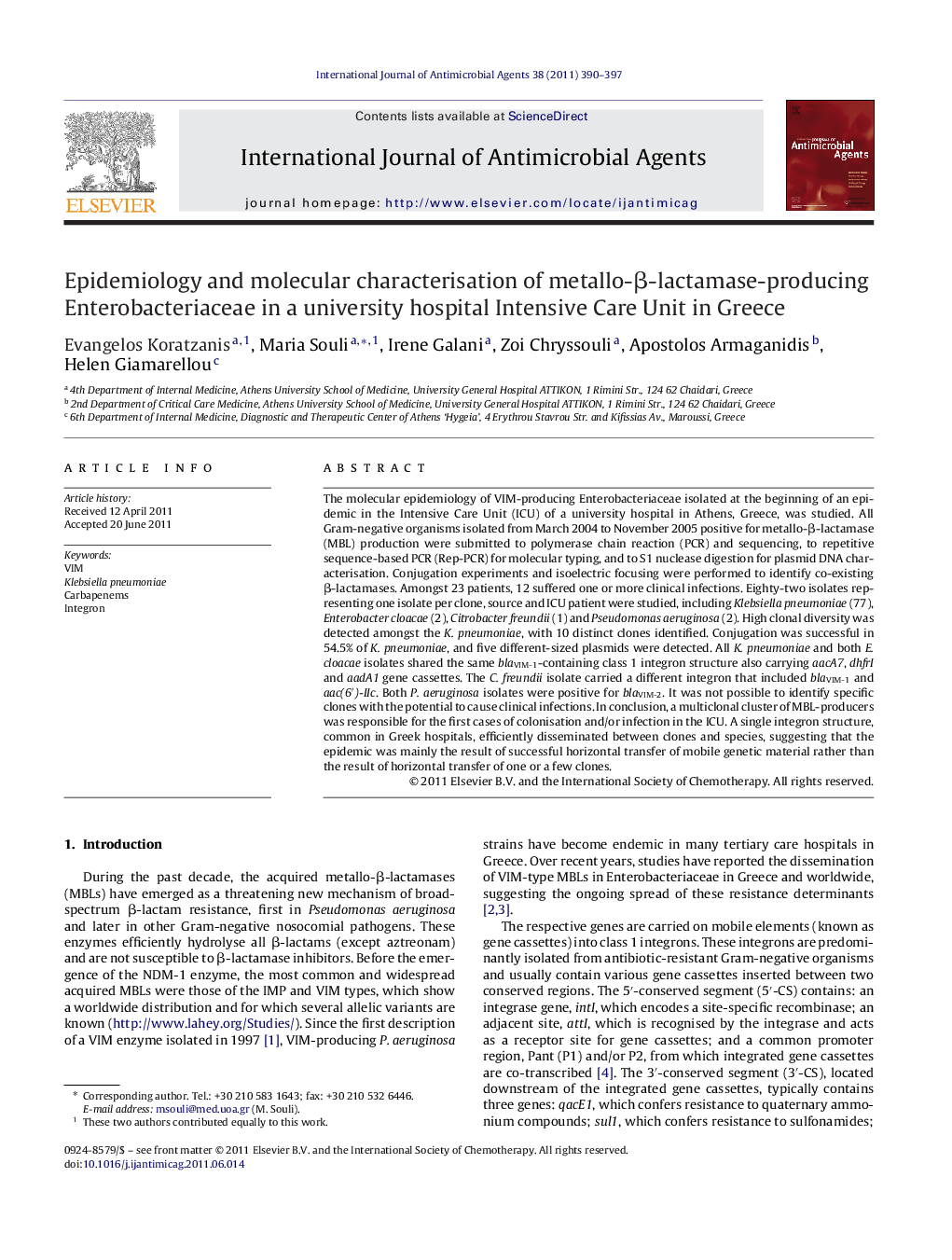| Article ID | Journal | Published Year | Pages | File Type |
|---|---|---|---|---|
| 6118255 | International Journal of Antimicrobial Agents | 2011 | 8 Pages |
Abstract
The molecular epidemiology of VIM-producing Enterobacteriaceae isolated at the beginning of an epidemic in the Intensive Care Unit (ICU) of a university hospital in Athens, Greece, was studied. All Gram-negative organisms isolated from March 2004 to November 2005 positive for metallo-β-lactamase (MBL) production were submitted to polymerase chain reaction (PCR) and sequencing, to repetitive sequence-based PCR (Rep-PCR) for molecular typing, and to S1 nuclease digestion for plasmid DNA characterisation. Conjugation experiments and isoelectric focusing were performed to identify co-existing β-lactamases. Amongst 23 patients, 12 suffered one or more clinical infections. Eighty-two isolates representing one isolate per clone, source and ICU patient were studied, including Klebsiella pneumoniae (77), Enterobacter cloacae (2), Citrobacter freundii (1) and Pseudomonas aeruginosa (2). High clonal diversity was detected amongst the K. pneumoniae, with 10 distinct clones identified. Conjugation was successful in 54.5% of K. pneumoniae, and five different-sized plasmids were detected. All K. pneumoniae and both E. cloacae isolates shared the same blaVIM-1-containing class 1 integron structure also carrying aacA7, dhfrI and aadA1 gene cassettes. The C. freundii isolate carried a different integron that included blaVIM-1 and aac(6â²)-IIc. Both P. aeruginosa isolates were positive for blaVIM-2. It was not possible to identify specific clones with the potential to cause clinical infections. In conclusion, a multiclonal cluster of MBL-producers was responsible for the first cases of colonisation and/or infection in the ICU. A single integron structure, common in Greek hospitals, efficiently disseminated between clones and species, suggesting that the epidemic was mainly the result of successful horizontal transfer of mobile genetic material rather than the result of horizontal transfer of one or a few clones.
Related Topics
Life Sciences
Immunology and Microbiology
Applied Microbiology and Biotechnology
Authors
Evangelos Koratzanis, Maria Souli, Irene Galani, Zoi Chryssouli, Apostolos Armaganidis, Helen Giamarellou,
